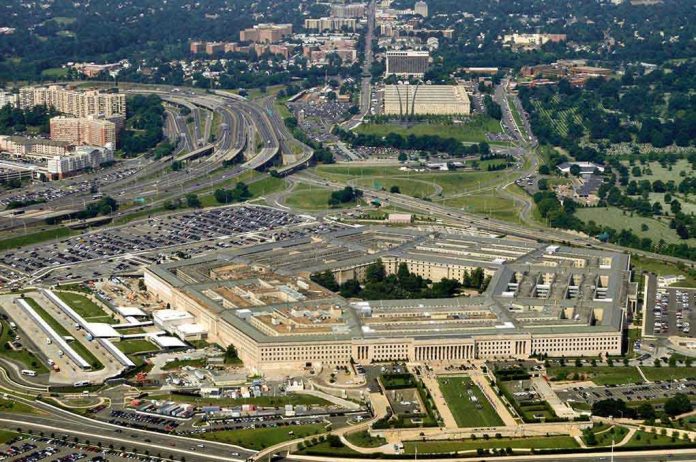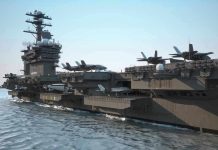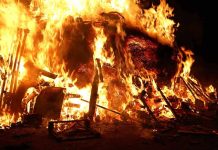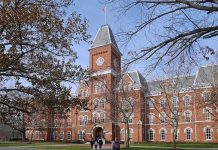
As California faces raging wildfires, President Trump’s Pentagon has released 150 National Guard troops from controversial Los Angeles security duties to battle the growing environmental emergency.
Key Takeaways
- Defense Secretary Pete Hegseth approved releasing 150 National Guard troops from a federal security mission in Los Angeles to battle California wildfires
- The decision follows concerns about understaffed firefighting units as California enters peak wildfire season
- Despite this release, over 3,800 troops remain deployed in Los Angeles from President Trump’s original 4,800-troop deployment to address what he called an “invasion.”
- The deployment has created tension between federal authorities and Governor Gavin Newsom, who criticized the use of the National Guard for protest control
- Task Force 51 continues its mission of protecting federal assets while releasing troops for firefighting duties
Strategic Resource Reallocation During Crisis
The Pentagon has pivoted to address California’s urgent wildfire threat by releasing 150 National Guard troops from their federal security mission in Los Angeles. Defense Secretary Pete Hegseth approved the recommendation from Gen. Gregory Guillot, commander of U.S. Northern Command, marking a significant shift in priorities as California enters its most dangerous fire season. The release follows military leadership’s request to return troops to Joint Task Force Rattlesnake, the specialized wildfire unit that has been critically understaffed since President Trump deployed forces to Los Angeles.
While this reallocation addresses immediate environmental dangers, it represents only a fraction of the original deployment. President Trump initially sent approximately 4,000 California National Guard troops and 800 active-duty Marines to Los Angeles against Governor Gavin Newsom’s wishes, in response to protests against Immigration and Customs Enforcement operations. The deployment has been controversial from the start, with critics questioning the legal justification and the appropriate use of military resources during wildfire season.
Balancing Security and Environmental Emergencies
The original deployment was justified by President Trump, who characterized the situation at the southern border as an emergency requiring military intervention. “There has been an invasion,” Trump stated, framing the deployment as necessary to maintain order amid immigration enforcement operations. This assessment contrasted sharply with military leadership’s more measured evaluation. Gen. Dan Caine, Chairman of the Joint Chiefs of Staff, offered a more nuanced perspective when questioned during budget hearings, stating, “I don’t see any foreign, state-sponsored folks invading, but I’ll be mindful of the fact that there have been some border issues.”
“Task Force 51 will release approximately 150 members of the California National Guard from the Federal Protection mission today,” a USNORTHCOM spokesperson confirmed, while emphasizing that the force remains “appropriately sourced” to fulfill its security mission in Los Angeles.
The deployment has stretched California’s emergency response capabilities thin at a critical time. Joint Task Force Rattlesnake, responsible for wildfire prevention and containment, has operated at reduced capacity since thousands of National Guard members were redirected to Los Angeles. Governor Newsom’s administration has repeatedly highlighted the dangerous trade-off of diverting these specialized resources away from fire prevention during California’s increasingly destructive wildfire season.
Political Tension Over Military Utilization
The deployment and subsequent partial reallocation of troops highlights the ongoing tension between federal security priorities and state emergency management. Task Force 51, led by Maj. Gen. Scott M. Sherman continues his mission protecting federal personnel and property in Los Angeles while releasing just 150 of the originally requested 200 troops back to wildfire duty. This compromise reflects the challenging balance between addressing immediate environmental threats and maintaining the security presence President Trump deemed necessary.
“These men and women signed up to serve — not to be Trump’s political props,” Governor Newsom’s office stated, criticizing the continued deployment of thousands of National Guard troops in Los Angeles while wildfires threaten communities across the state.
With 3,850 troops still deployed from the original 4,000 National Guard members sent to Los Angeles, questions remain about resource allocation during California’s fire season. The Pentagon’s decision to release 150 troops represents an acknowledgment of the wildfire threat while maintaining President Trump’s security priorities in urban centers. As California faces multiple crises simultaneously, the balancing of resources between law enforcement support and disaster response continues to be a contentious issue between federal and state authorities.



